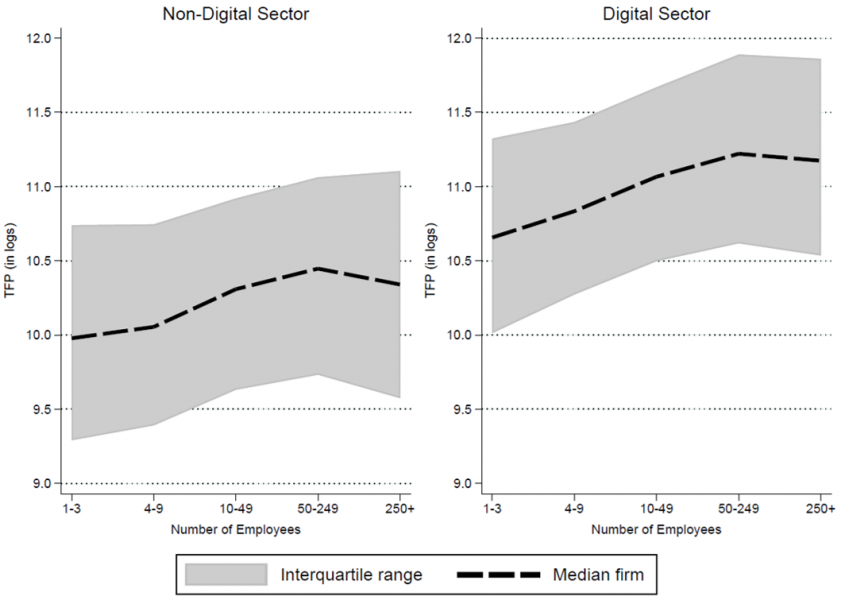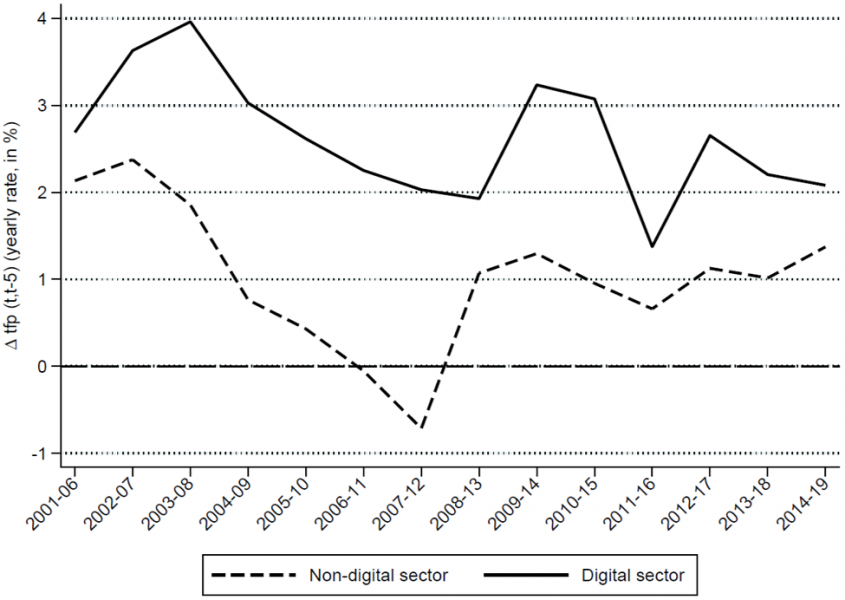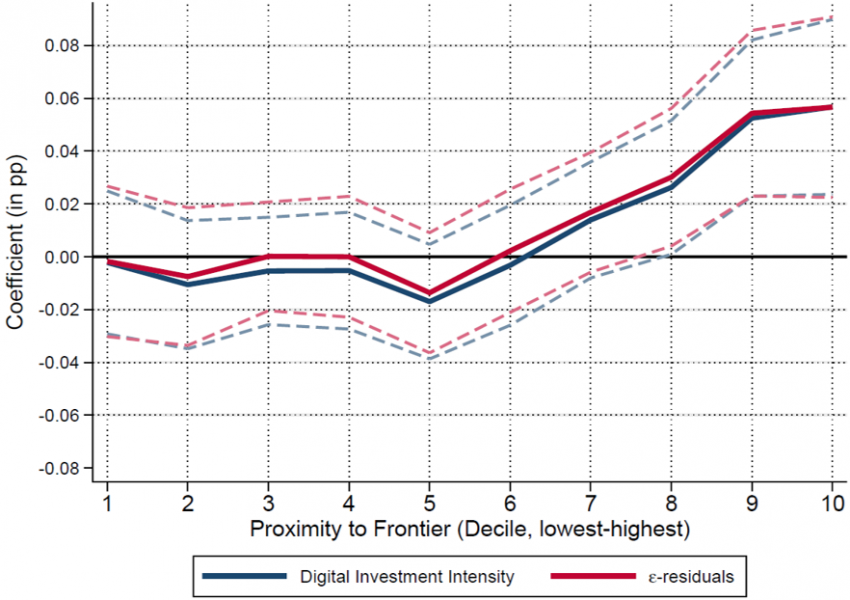References
Anderton, R., Botelho, V., and P. Reimers (2023), “Digitalisation and productivity: gamechanger or sideshow?”, ECB Working Paper no. 2794.
Calvino, F., C. Criscuolo, L. Marcolin, and M. Squicciarini (2018), “A taxonomy of digital intensive sectors”, OECD Science, Technology and Industry Working Papers, no. 14.
Cusolito, Ana Paula, Daniel Lederman, and Jorge Peña (2020), “The effects of digital technology adoption on productivity and factor demand: firm-level evidence from developing countries”, World Bank Policy Research Working Paper no. 9333.
Gal, P., G. Nicoletti, T. Renault, S. Sorbe, and C. Timiliotis (2019), “Digitalisation and productivity: In search of the holy grail – firm-level empirical evidence from EU countries”, OECD Working Paper no. 1533.
Gandhi, A., S. Navarro, and David A. Rivers (2020), “On the identification of gross output production functions”, Journal of Political Economy Vol. 128, no. 8.






